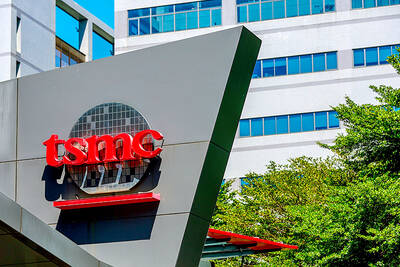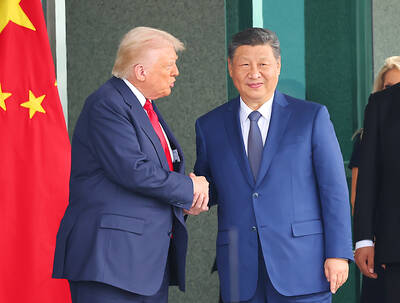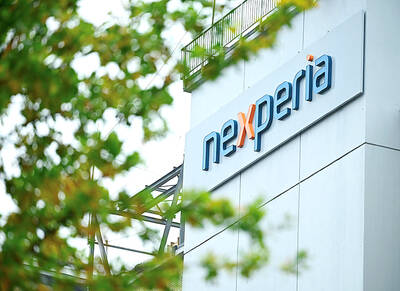VIA Technologies (
VIA chose to back DDR memory for its chipsets, while Intel championed Rambus memory to match its CPU, the brains of a computer. DDR beats Rambus memory on price and computer manufacturers love the chips.
"DDR is now the mainstream of the memory chip market. In 2001, it captured 30 percent of market share," said Desi Rhoden, president of Advanced Memory International Inc, a group that promotes standard memory chip technologies. "By mid-2002, it will be the market mainstream."
One by one, executives from five memory chip giants -- including Micron Technology Inc and Samsung Semiconductor Inc -- all stood up and showed how their own production shifts would increase DDR's market share to 50 percent or more by the middle of this year, while Rambus could sink to as low as 2 percent.
The battle has been far from fair. Intel has spent more than US$1 billion -- more than VIA made last year -- to back Rambus. VIA put up pocket change by comparison.
Intel, the world's largest computer CPU maker, chose Rambus in the mid-1990s, when the speed of their CPUs were being held up by slow memory chips. But the chips proved notoriously difficult to manufacture.
Some companies said they would have had to re-tool entire factories in order to produce Rambus chips.
In the late 1990s, Intel stepped in with cash infusions of US$500 million for a 6 percent stake in Micron and US$100 million for Samsung to help them find less-expensive ways to manufacture Rambus memory chips. They found some success, but price points remained high.
VIA swung in behind DDR and a predecessor chip by making chipsets to connect the memory chips to Intel Pentium III -- something no other company dared do in the face of mighty Intel -- and Pentium 4 chips.
Intel sued VIA for patent infringement in both cases. The Pentium III case was settled out of court for an unspecified amount. The Pentium 4 case continues.
VIA's first victory came when the market chose the less expensive DDR chips and VIA's chipsets along with them. The firm's revenue grew 171 percent in 2000 to almost US$1 billion as a result.
In early last year, VIA hosted its first DDR Summit, encouraging memory makers to do what comes natural: Manufacture the less-expensive DDR chips that their equipment could produce easily. At the time, Rambus was viewed as the only threat to DDR.
This year's DDR Summit, the second annual meeting, became merely a showcase for DDR memory chips, as the standard has already become just that. Rambus chips barely received mention.

RUN IT BACK: A succesful first project working with hyperscalers to design chips encouraged MediaTek to start a second project, aiming to hit stride in 2028 MediaTek Inc (聯發科), the world’s biggest smartphone chip supplier, yesterday said it is engaging a second hyperscaler to help design artificial intelligence (AI) accelerators used in data centers following a similar project expected to generate revenue streams soon. The first AI accelerator project is to bring in US$1 billion revenue next year and several billion US dollars more in 2027, MediaTek chief executive officer Rick Tsai (蔡力行) told a virtual investor conference yesterday. The second AI accelerator project is expected to contribute to revenue beginning in 2028, Tsai said. MediaTek yesterday raised its revenue forecast for the global AI accelerator used

Taiwan Semiconductor Manufacturing Co (TSMC, 台積電) has secured three construction permits for its plan to build a state-of-the-art A14 wafer fab in Taichung, and is likely to start construction soon, the Central Taiwan Science Park Bureau said yesterday. Speaking with CNA, Wang Chun-chieh (王俊傑), deputy director general of the science park bureau, said the world’s largest contract chipmaker has received three construction permits — one to build a fab to roll out sophisticated chips, another to build a central utility plant to provide water and electricity for the facility and the other to build three office buildings. With the three permits, TSMC

TEMPORARY TRUCE: China has made concessions to ease rare earth trade controls, among others, while Washington holds fire on a 100% tariff on all Chinese goods China is effectively suspending implementation of additional export controls on rare earth metals and terminating investigations targeting US companies in the semiconductor supply chain, the White House announced. The White House on Saturday issued a fact sheet outlining some details of the trade pact agreed to earlier in the week by US President Donald Trump and Chinese President Xi Jinping (習近平) that aimed to ease tensions between the world’s two largest economies. Under the deal, China is to issue general licenses valid for exports of rare earths, gallium, germanium, antimony and graphite “for the benefit of US end users and their suppliers

Dutch chipmaker Nexperia BV’s China unit yesterday said that it had established sufficient inventories of finished goods and works-in-progress, and that its supply chain remained secure and stable after its parent halted wafer supplies. The Dutch company suspended supplies of wafers to its Chinese assembly plant a week ago, calling it “a direct consequence of the local management’s recent failure to comply with the agreed contractual payment terms,” Reuters reported on Friday last week. Its China unit called Nexperia’s suspension “unilateral” and “extremely irresponsible,” adding that the Dutch parent’s claim about contractual payment was “misleading and highly deceptive,” according to a statement